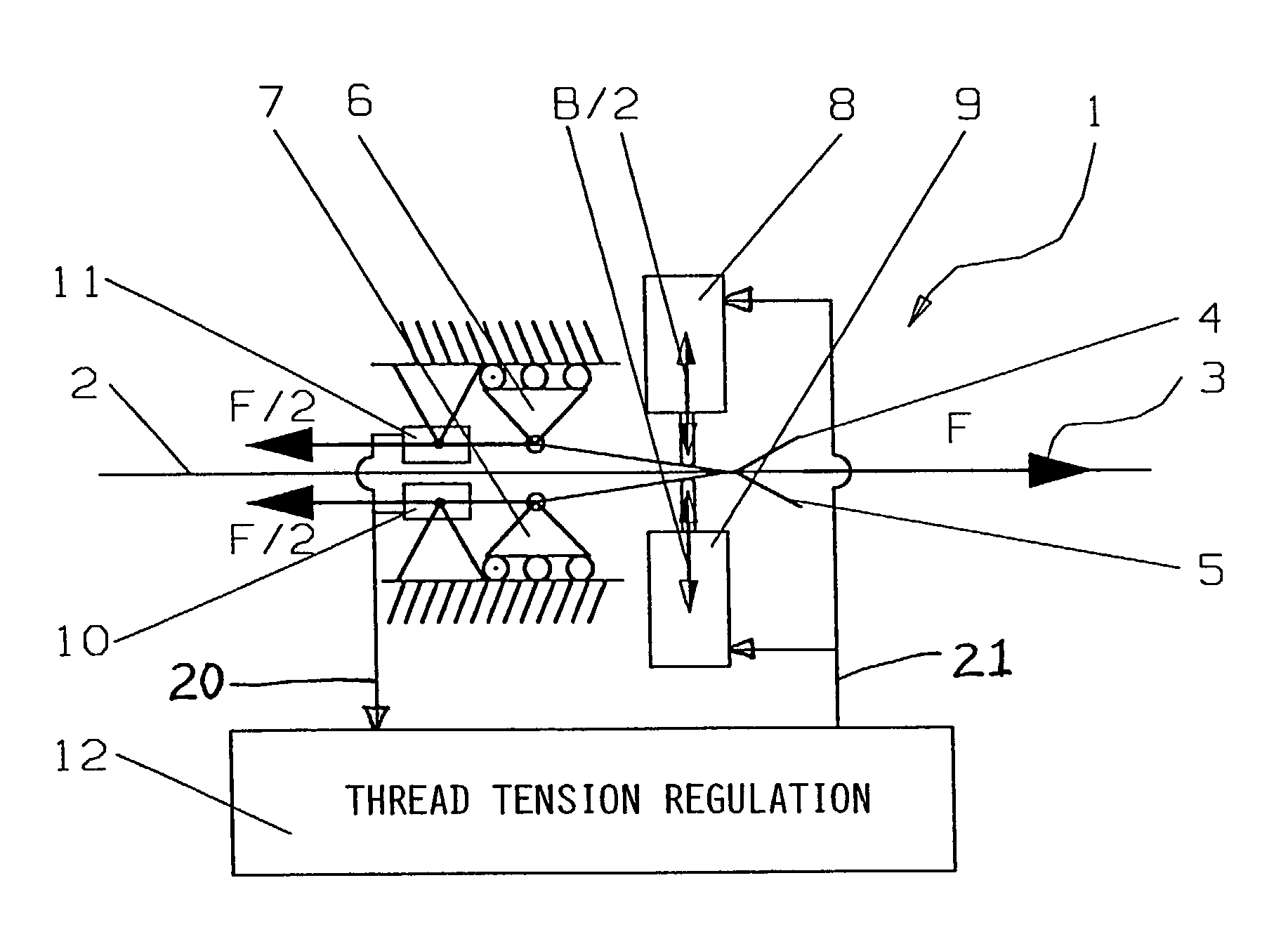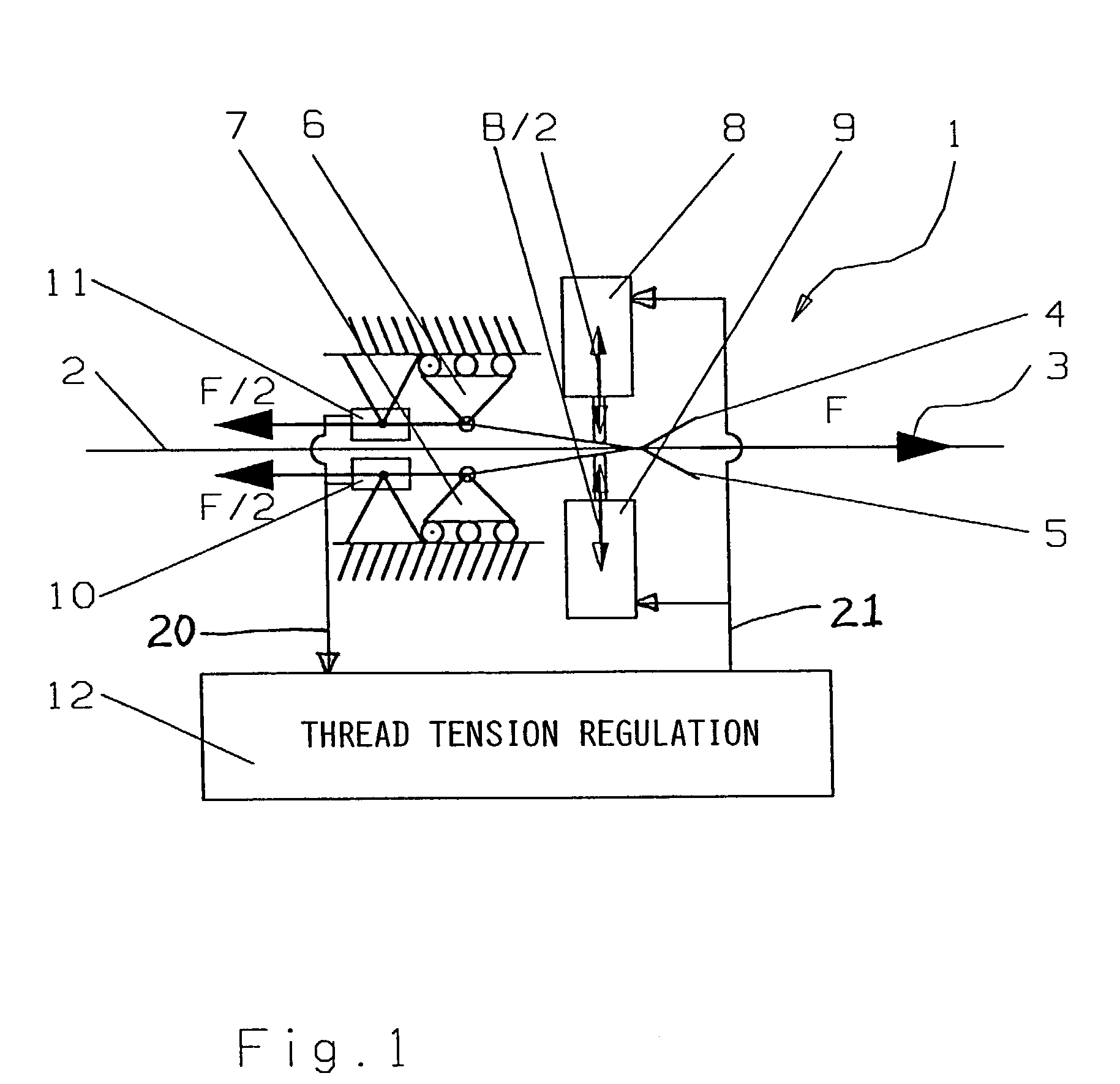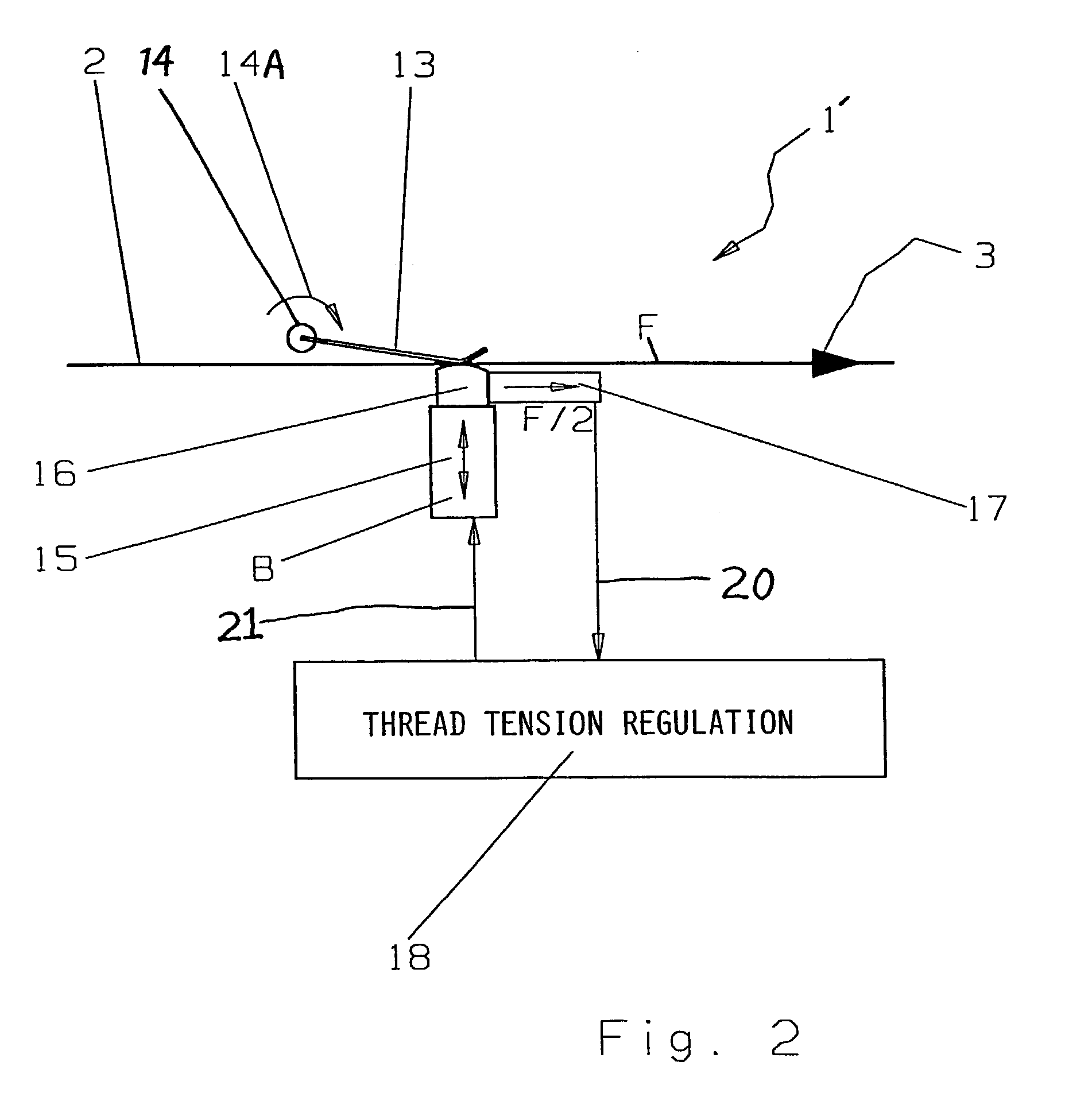Thread tension regulation in a thread brake device and method in a textile processing machine
a technology of brake device and thread, which is applied in the direction of weaving, textiles and papermaking, looms, etc., can solve the problems of additional mechanical loading of thread, and achieve the effects of rapid actuation motion, rapid braking force and resulting thread tension
- Summary
- Abstract
- Description
- Claims
- Application Information
AI Technical Summary
Benefits of technology
Problems solved by technology
Method used
Image
Examples
Embodiment Construction
[0020]FIG. 1 schematically shows a thread brake arrangement 1 according to the invention, as it may be used for braking a weft thread in a weaving loom. The thread 2 is guided and extends in a threading running or feed direction 3 along a straight linear thread travel path through the thread brake arrangement 1. The thread brake arrangement 1 includes two lamellar brake elements 4 and 5, for example thin metal sheets or lamellae 4 and 5, which are elastically flexible and elastically pressed against one another, with the thread 2 received running therebetween. The thread brake arrangement 1 further includes two opposed actuators or operating elements 8 and 9 that selectively act on the two lamellar brake elements 4 and 5 in opposite directions as shown by the double-headed arrows, to apply a controllable actuating displacement and / or force to the brake elements 4 and 5, so as to exert a controllable braking force B via the brake elements 4 and 5 onto the thread 2.
[0021]When the thre...
PUM
 Login to View More
Login to View More Abstract
Description
Claims
Application Information
 Login to View More
Login to View More - R&D
- Intellectual Property
- Life Sciences
- Materials
- Tech Scout
- Unparalleled Data Quality
- Higher Quality Content
- 60% Fewer Hallucinations
Browse by: Latest US Patents, China's latest patents, Technical Efficacy Thesaurus, Application Domain, Technology Topic, Popular Technical Reports.
© 2025 PatSnap. All rights reserved.Legal|Privacy policy|Modern Slavery Act Transparency Statement|Sitemap|About US| Contact US: help@patsnap.com



